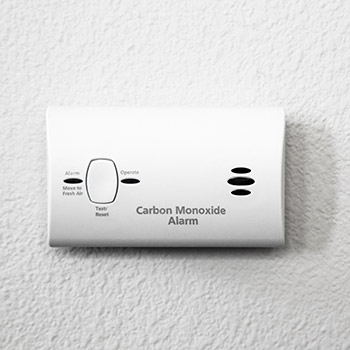We use cookies on this site to enhance your experience.
By selecting “Accept” and continuing to use this website, you consent to the use of cookies.

Ontario’s Carbon Monoxide Awareness Week runs from Nov. 1 to 7. Wilfrid Laurier University’s Safety, Health, Environment and Risk Management office wants you to be informed about the dangers of carbon monoxide (CO), a highly toxic, invisible gas and the steps you can take to keep yourself safe.
Carbon monoxide (CO) is known as "the silent killer" because it is an invisible, tasteless and
All residence buildings on Laurier’s Waterloo and Brantford campuses are equipped with working CO alarms. Tampering with these devices is a violation of the Student Code of Conduct.
Carbon monoxide alarms are installed in all residences if they have a fuel-fired appliance (e.g., a furnace) or have an attached garage in compliance with the Ontario Fire Code. For all high-rise residences, CO alarms are installed in units that share a wall, floor or ceiling with a room that contains a fuel-fired appliance.
Working CO alarms must be installed in the home if there is a fuel-burning appliance, a fireplace or an attached garage. Fuel-burning appliances can include furnaces, hot water heaters, gas or wood fireplaces, portable fuel-burning heaters and generators, barbeques, stoves
Working CO alarms must be adjacent to each sleeping area if the home has a fuel-burning appliance, a fireplace or an attached garage. For added protection, a carbon monoxide alarm should
If you live in a condo or apartment building with a service room, CO alarms must be installed in the
Your CO alarm sounds different than your smoke alarm. If you live off-campus, test both alarms monthly and make sure everyone in your home knows the difference between the two alarm sounds. Don’t be confused by the sound of your CO alarm’s low-battery warning. Follow your CO alarm manufacturer’s instructions so you know the difference between the low-battery warning, the end-of-life warning and the alarm alerting you to the presence of CO in your home.
Exposure to CO can cause flu-like symptoms such as headaches, nausea, dizziness, as well as confusion, drowsiness, loss of consciousness and death.
If your CO alarm
If your CO alarm sounds and no one is suffering from symptoms of CO poisoning, check to see if the battery needs replacing or the alarm has reached its end of life before calling 9-1-1.
Students with questions or concerns regarding carbon monoxide and detection may contact Rick Fraser, emergency management and fire safety officer in Laurier’s Safety, Health and Environment and Risk Management (SHERM) Office.